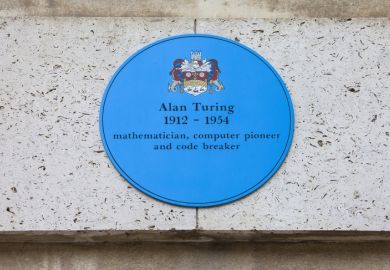For anyone embarking on a literature review, says Aurélie Gandour, “one simple step will put you way ahead of all your colleagues: go and get an appointment with a librarian”.
Ms Gandour is herself an academic librarian who has worked at the Paris University Institute for Teachers’ Training (attached to the Université Paris-Sorbonne), now known as L’ESPE Paris, and currently within the NHS in the UK, training postgraduates and early career researchers in precisely these skills. She also maintains the website www.howtodoaliteraturereview.com.
Early support from a librarian, explains Ms Gandour, can smooth the process because “all literature reviews need to start with a literature search, and most literature searches will involve using bibliographic databases”. Many are “a little tricky to use”, particularly if approached in a spirit of trial and error, “so do yourself a favour and learn how to use them properly from the get-go”.
The central technique for a successful literature review, continued Ms Gandour, is to proceed methodically, building on “the great articles you’ve already found”: “The first obvious step is to systematically check the bibliography of each article you read. But you should also use Google Scholar (or any other database available to you) to check if those articles have been cited since they were published, and track down those references.
“Then do searches on the main authors to find out if they published other articles on the topic and learn about their newest research results. Finally, observe in which journals the best articles were published and take a close look at their archives.”
The only danger of this, in Ms Gandour’s view, is “getting stuck in searching mode…So it’s important to actually plan for reading breaks. Make sure you take the time to read the documents you’ve already found, take thorough notes on each of them, and save everything preciously.”
It is crucial to avoid getting “drowned under the sheer mass of the references you’re going to amass”, so Ms Gandour suggests that researchers make sure they’ve “got a good system in place to save references from the very beginning. You can do it electronically by using reference management software (such as EndNote, Zotero, Mendeley…) or the old-fashioned way with printed copies and lots of folders.”
She said that it was important to remember to follow the precise referencing style required by a university (or the journal to which an article is being submitted) – even what is known as “Harvard Style” has many variants.
“If you’re using referencing software,” notes Ms Gandour, “you should be able to choose a style with a click of a button. If you’re doing it by hand, go ask your library for the official guidelines.”
When you come to the final stage of writing up the review, the key is to focus on exactly why you are doing it (normally to support some research that you’ve done or are about to do). With that in mind, concludes Ms Gandour, “give yourself the permission to cut anything that’s out of your actual scope”. The mere fact you found something interesting should not be enough to secure it a place in the review, she said.
POSTSCRIPT:
Print headline: Be thorough in making your list
Register to continue
Why register?
- Registration is free and only takes a moment
- Once registered, you can read 3 articles a month
- Sign up for our newsletter
Subscribe
Or subscribe for unlimited access to:
- Unlimited access to news, views, insights & reviews
- Digital editions
- Digital access to THE’s university and college rankings analysis
Already registered or a current subscriber? Login




